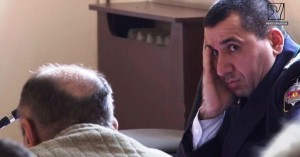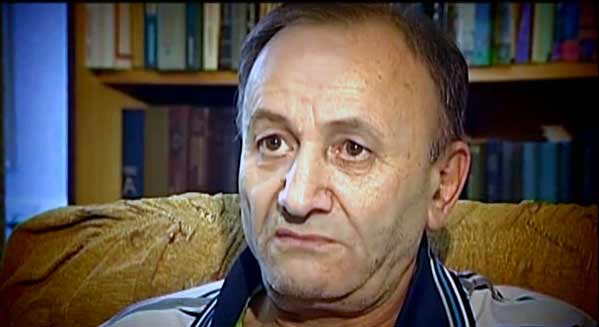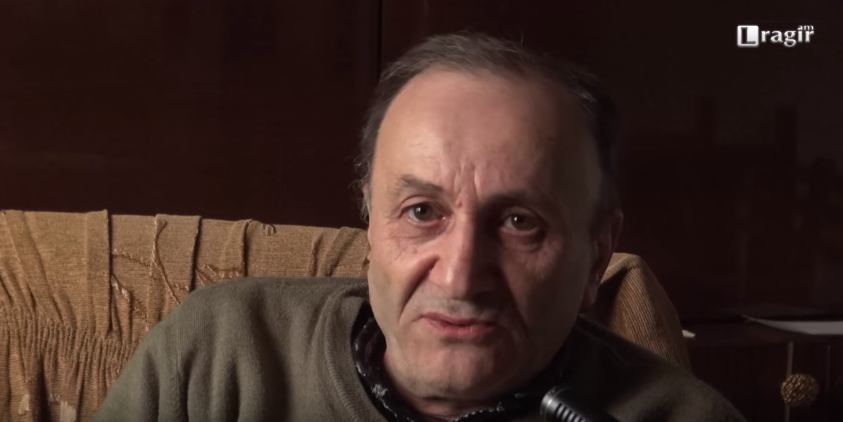The judge ignored his own decision

On February 11 and March 10, 2016 another two court hearings were held regarding the case of temporary soldier Manuchar Manucharyan’s suicide (according to the official hypothesis) case. The victim’s legal representative in court was “Peace Dialogue” NGO’s expert and criminalist Ruben Martirosyan. Hereby we present his review of the most important details of the two court hearings.
During the court hearing on February 11 both the aggrieved party and the defendant petitioned the court to summon and interrogate a witness central in the case captain Arthur Abrahamyan, the one who took responsibility for the security guard on the day of the incident and who was deliberately not included in the list of summoned people by the preliminary investigative body.
At court the captain was supposed to answer very important and significant questions regarding the case. The aggrieved party’s argument was that, according to the law, he was supposed to be prosecuted under at least three articles: abuse of power, official forgery and official inaction. As the victim’s legal representative claimed the captain reportedly was at the crime scene when Manuchar Manucharyan was killed. According to another report, he was drunk from early in the morning that day. The aggrieved party does not exclude the possibility that he was the one who killed Manuchar.
“Throughout the trial, Judge Mkrtchyan who was following the prosecutor’s instructions rejected, without any valid explanation, the appeal to invite Abrahamyan as a witness,.”– R. Martirosyan said. The parties also petitioned for summoning the co-author of #228/14 expert opinion forensic psychologist Elda Green.
It was based on her opinion that the preliminary investigative body qualified the case as a suicide. A quote from the aforementioned expert opinion says: “…the suicide was driven by A. Stepanyan’s and B.Gaboyan’s illegal actions”.
This conclusion does not inspire confidence among the parties for the following reasons: it is based on just one person’s, Libik Mkrtchyan’s false testimony. This testimony was revealed in court to have been made under some pressure when Mkrtchyan changed his testimony. Moreover, the other witnesses besides Mkrtchyan mentioned that on the day of the incident M. Manucharyan was in good mood. Another witness Hovhannes Mikaelyan even testified that about an hour prior the incident he was telling jokes with Manuchar in the combat post.
Meanwhile the forensic psychologist completely ignored the testimonies of this witness and wrote that allegedly M. Manucharyan was desperate and confused, feeling hopeless and stressed “…which considerably effected his consciousness and behavior.”
“This conclusion is ungrounded since during the military service M. Manucharyan has never been in such a desperate state: his elder brother who was serving at Vazgen Sargsyan military academy in Yerevan said that he was always in contact with him, was aware of all the details of his brother’s service and if necessary he was ready to help and support him at any time.”- mentioned the representative of the victim’s successor.
It was necessary to summon the forensic expert also because in her conclusion she brings out forensic terms, such as “asocial suicide” or “affective suicide”, which require professional clarification.
It is a common practice that the experts are summoned to court to testify in matters such as this.
The Judge and the prosecutor Amiryan were against inviting forensic psychologist Elda Green to court and that is how the court decision was made despite persistent demands and petitions of the parties.
For a long time, even during the previous court hearings the aggrieved party appealed to be provided with 13 laser disks attached to computer conclusion number 13-2459 of the expert, which include the video recordings of 13 security cameras of military unit depicting the day of the murder and the day before it (July 30-31)
They would allow the aggrieved party to prove that M. Manucharyan was murdered since the videos recorded the guard tower No. 5 and the surrounding area. Moreover, after presenting these videos, the prosecutor, based on the content on them, perhaps would be able to prove that the claims of the aggrieved party that M. Manucharyan was murdered were not true.
The presiding Judge A. Mkrtchyan even announced before that the aggrieved party had nothing to worry about and promised to provide the videos. During the court hearing on February 11, 2015 prosecutor Amiryan showed the disks, at the same time announcing that he could not provide the aggrieved party with the copy of the disks.
Together with the disks he also brought a letter, which most probably was an answer to his inquiry to the commander of the military unit. According to which the unit commander was saying: “The command of the military unit is against the providing the afore mentioned videos to any individual since the video content includes elements of daily schedule and deployment of military facilities in the unit, as well as other information containing military secrets.”
The aggrieved party insists that the letter was written at the order of prosecutor Amiryan and his superiors. It should also be noted that the aggrieved party is not simply an individual but a legal entity. It was clear to the aggrieved party, even months before the hearing that the disks would not be provided to them because it was an intentional homicide and the video recordings would clearly show who the murderers were and the truth would have been revealed. A suggestion was made to sign an agreement that the videos wouldn’t be published, however the Judge was trying by all means to persuade the parties to watch the videos during the hearings. Taking into consideration that the recording had 221 hours of footage and each court hearing lasts only three hours, it would mean that the recordings were to be shown during 73 court hearings.
It should also be noted that the court hearings are held approximately once a month, thus according to the Judge’s suggestions, it would take 6 years of judicial process just to watch the footage.
The successor of the victim mentioned in the very beginning of the hearing that it was a murder: in the report prepared by the investigator regarding the examination of the deceased soldier’s clothes it is mentioned that on M. Manucharyan’s right rear pant leg, a 5mm diameter round hole, the edges of which have traces of burn. However, this information was not mentioned in the expert opinion.
The described mark is very similar to a gunshot wound fired from 5.45mm caliber rifle. If during the previous court hearings in response to this announcement the Judge was stating that it was simply an assumption, during this trial an appeal was made and the package of the clothes was opened and the mentioned trace was shown to the court. This implies that the expert(s) carried out an official fabrication not referring to this hole. The logical continuation of all this were the appeals:
- To send the mentioned trousers to an expert in another expert center
- To summon the authors of the examination report number
The court decided to summon the criminalist expert M. Haroutyunyan, however during the trial on March 10 it turned out that for some reason the Judge, abusing his official position, without agreeing to the parties secretly summoned ballistic expert A. Hambardzumyan.
In response to R. Martirosyan’s complaint that it was a falsification and the Judge violated his own decision, the Judge answered: “…Hambardzumyan will give a comprehensive answer to all your questions, you will see.” This implies that the presiding judge had already had a meeting with the experts, received comprehensive answers and was assuming that everyone would also become convinced.
Each questioning contains a preparatory phase and the parties should thoroughly prepare for it. The parties were prepared to question a person, however absolutely different person shows up as a witness. The complaints did not give any satisfactory result.
The second proposal was made to the court saying that the parties need to prepare for questioning and that at least 15 minutes should be provided to the parties to prepare to question the ballistic expert and recall what notes he had made in his expert report, the Judge announced that the representative of the victim’s successor was impeding the normal course of the trial and warned that in case such actions continue, he would be punished and asked to leave the court room.
The forensic ballistic expert’s testimony only showed that he did not examine M. Manucharyan’s trousers to find gunshot wounds, again for some ‘unknown reasons.’
Despite this fact, the court denied the motion to engage another ballistic expertise. Then he did not allow a motion to have his own decision of inviting the forensic expert realized. Regarding the laser disks, on February 11, 2016 a decision was made to send an inquiry to the Ministry of Defense to find out whether the disks contained official secret information or not. During the court hearing on March 10, 2016 the Judge announced that no answer was received from the Ministry of Defense yet.
Posted 18 March, 2016















